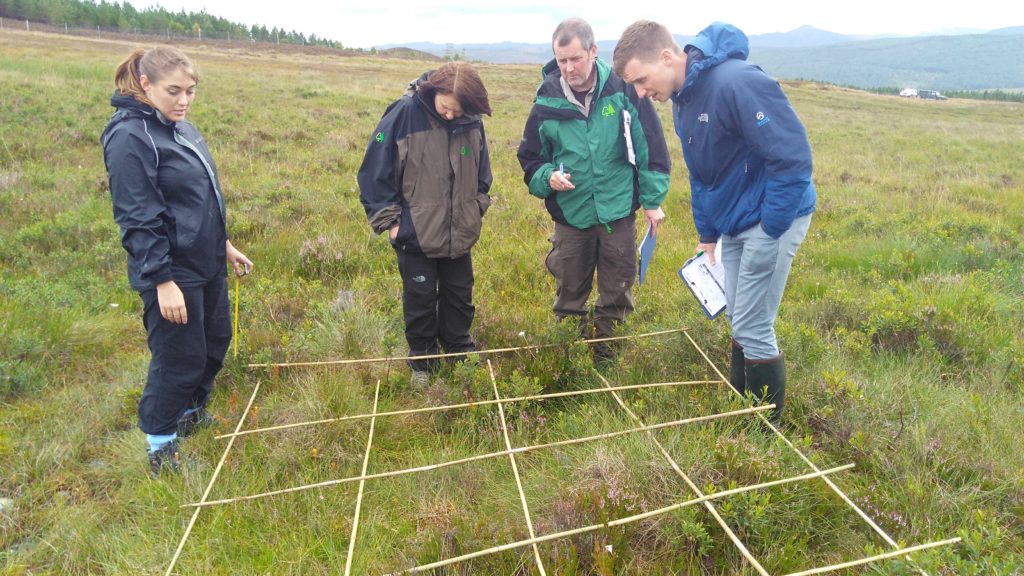Upland Habitats and Impact of Herbivores: Atholl Estate – Event summary
5 August 2017Managing blanket bog to achieve favourable habitat conditions
This interactive meeting was held at the Atholl Estate, Perthshire.
The impacts of grazing of both domestic and wild herbivores affect the long term sustainability of upland habitats. For upland managers it is important to recognise these different upland habitats and be able to identify their condition in relation to management. Habitat condition, as indicated by the vegetation type, cover and height is determined by the level of grazing and trampling. Good habitat condition is important for supporting wildlife and for optimum carbon storage capacity both important factors in sustainable land management.
A simple habitat assessment can be carried out at plots across each habitat type to give a base-line of habitat condition. Regular assessments can be used to show local grazing or trampling pressures and trends over a period of time on an upland estate or at a wider deer management group level. The information can be mapped using GIS to produce visual reports on grazing and tram![]() pling impacts to help set targets for stock or deer management and enables managers to see where they are doing well and where any improvements can be made.
pling impacts to help set targets for stock or deer management and enables managers to see where they are doing well and where any improvements can be made.
Blanket bog is a hugely important store of carbon, and intact blanket bog with a good layer of bog mosses, are especially valuable because they are actively forming peat and storing carbon. To find out more about reducing your carbon footprint and how to adapt to climate change visit the Farming For a Better Climate website.
- FAS: Guidance for Habitat Impact Assessment Surveys
- This guidance document explores Habitat Impact Assessment Surveys. Assessing the habitat impacts of grazing on habitats requires looking at the various effects of herbivores, notably red deer, on the main habitats that occur in the uplands. These habitat types are dwarf shrub heath (wet & dry) and blanket bog, which are the most extensive habitats in the uplands.
Sign up to the FAS newsletter
Receive updates on news, events and publications from Scotland’s Farm Advisory Service

